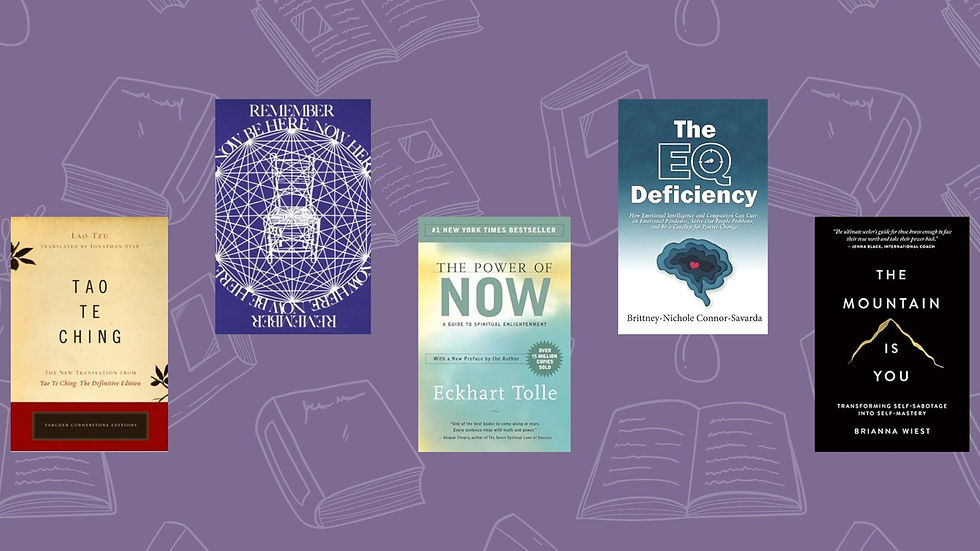The Science Behind Emotional Energy: Exploring the Vibrations of Our Emotional World
- Brittney-Nichole Connor-Savarda
- Apr 1, 2023
- 3 min read

In today's fast-paced, ever-evolving world, the concept of energy has become a popular topic of discussion. In particular, there is a growing intrigue in the idea of emotional energy and how it impacts our daily lives. At the core of these discussions is the fact that everything in the universe is made up of energy, and this energy vibrates at various frequencies. As we dive deeper into understanding emotional energy, we come across a wealth of scientific data and studies demonstrating the distinctive frequencies that different emotions carry.
Understanding Energy and Vibration:
To appreciate emotional energy, it is essential to become familiar with energy and vibration. In physics, energy is defined as the capacity to do work. It exists in various forms, such as kinetic, potential, thermal, and electromagnetic energy. At the most fundamental level, the protons, neutrons, and electrons that make up atoms vibrate, and it is these vibrations that create energy.
Vibration, in the context of energy, refers to the movement of particles in a substance or system. At the atomic level, particles naturally move, and this movement creates an oscillating pattern of waves. Depending on their composition, different substances will have their atoms vibrate at distinct frequencies. In essence, the frequency of the vibrations determines the type of energy a substance possesses.
Our Emotional World:
Emotions, often considered abstract and intangible, can also be viewed through the lens of energy and vibration. As humans, we experience a wide spectrum of emotions throughout our lives, manifesting through physiological responses within our bodies. The biological aspect of emotions involves an intricate interplay among hormones, neurotransmitters, and the nervous system. Like everything else in the universe, these biological constituents are composed of atoms that vibrate and generate energy.
Research on Emotional Frequencies:
A groundbreaking study by Dr. David R. Hawkins and the Institute of Noetic Sciences demonstrated the existence of an energy field generated by various emotions, sometimes described as a "consciousness field." Using a technique called Applied Kinesiology, Dr. Hawkins developed a scale that assigned distinct frequency values to different emotions, ranging from shame (20) to enlightenment (700+). Emotions such as fear and anger had lower frequencies, while emotions like love and joy were found to have higher frequencies.
Based on these findings, researchers have also delved into the therapeutic potential of using emotional energy in healing practices. Dr. William Tiller, a former Stanford University professor, found that positive emotional states could aid the healing process. This research has further led to the development of healing modalities like Reiki and the Emotional Freedom Technique (EFT), which manipulate emotional energy fields to improve well-being.
The Ripple Effect of Emotional Energy:
When we emit emotional energy through our thoughts, feelings, and actions, it has the potential to affect not only us but also those around us. Researchers at the HeartMath Institute have found that the heart generates the most strong electromagnetic field in the human body, which our emotions can influence. Research at the institute shows that feelings of love and compassion can create a synchronized harmony between our heart and brain frequencies, positively influencing those around us.
Contrastingly, emotions like anger and frustration can cause an erratic and unsynchronized heart and brain frequency pattern, negatively impacting our environment. Our emotional energy can not only create a ripple effect in our immediate surroundings but may also extend outwards, ultimately influencing collective human consciousness. Understanding the power of our emotional energy helps us lead a more authentic and self-aware existence and emphasizes our interconnectedness with the world that surrounds us.
Through the framework of physics and biology, emotional energy holds a fascinating position in the continuum of human experience. The science behind emotional energy strengthens the argument that our emotions possess unique frequencies and vibrations that significantly influence our well-being and the world around us. By delving deeper into the scientific realm of emotional energy, we can explore the potential of using this knowledge for self-awareness, personal growth, and greater collective harmony.



This is a wonderful article that completely validates the feelings I've been recently experiencing where I release a mass of emotion and those around me instantly react. For example, my spouse and I got into a small heated argument. And I noticed that I released a HUGE amount of frustrated/angry waves, almost like an energy surrounded me. And my spouse who has had abusive past relationships went into an apologetic mode and started crying. I immediately noticed and started pulling my emotions toward a more calm neutral state. And my spouse instantly changed their pattern and started to settle. I also had an experience where my son was on a call with me. And he told me something tha…